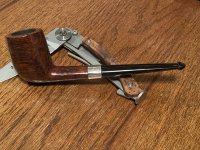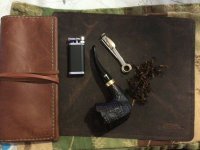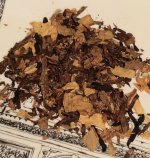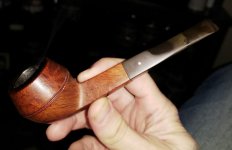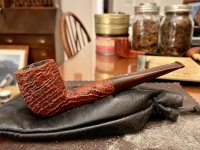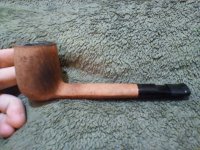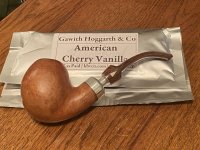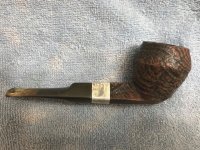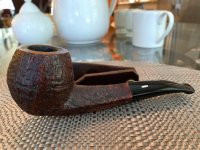I & Co. in a horizontal diamond stamped on the shank (the mark for
Inderwick & Co. 1797-2000)
E.I over G.I over H.J.I stamped on the mount
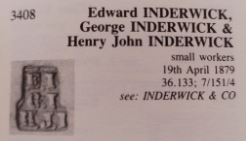
with marks for London 1900
+ Dunhill FLAKE
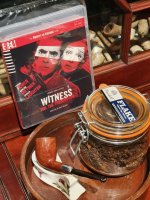
Watching WITNESS FOR THE PROSECUTION
Inderwick & Co. were also dealers in clay pipes but on clays the stamp was incuse INDERWICK instead of I & Co.
Below is a mid-late 19th cent. example - with slightly later band repair and horn stem - alongside another typical Burns Cutty of the period with similar band repair and stem by T. Milo (
Theophilus Milo operated in Finch Lane in the City of London between 1860 and 1870 and was also in business as a tobacconist in the Strand) as well as three examples of the typical Burns Cutty clay from the same period alongside an early 20th cent. unsmoked example from the early 20th cent. by C. Crop & Sons (C.Crop - from the 1840s or 1856 depending on where you search to 1910 or to 1924 according to which source material you consult) complete the picture
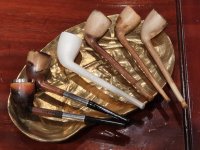
The Clay Cutty
"In the 'fifties (1850s) the pipes smoked were mostly clays. There were the long clays or “churchwardens,” to be smoked in hours of ease and leisure; and the short clays—“cutties”—which could be smoked while a man was at work. Milo, a tobacconist in the Strand, and Inderwick, whose shop was near Leicester Square, were famous for their pipes, which could be bought for 6d. apiece. A burlesque poem of 1853, in praise of an old black pipe, says:
Think not of meerschaum is that bowl: away, Ye fond enthusiasts! it is common clay, By Milo stamped, perchance by Milo’s hand, And for a tizzy purchased in the Strand.
Famed are the clays of Inderwick, and fair
The pipes of Fiolet from Saint Omer.
(From Notes and Queries - September 27, 1913)
Colonel Harold Malet at the same time wrote -
“When I was a cadet at Sandhurst in 1855-58, Milo’s cutty pipes were quite the thing, and the selection by cadets of a good one out of a fresh consignment packed in sawdust was eagerly watched by the ‘Johns.’ (Major-General John Le Marchant, first Governor of the Royal Military College, c.1810).”





